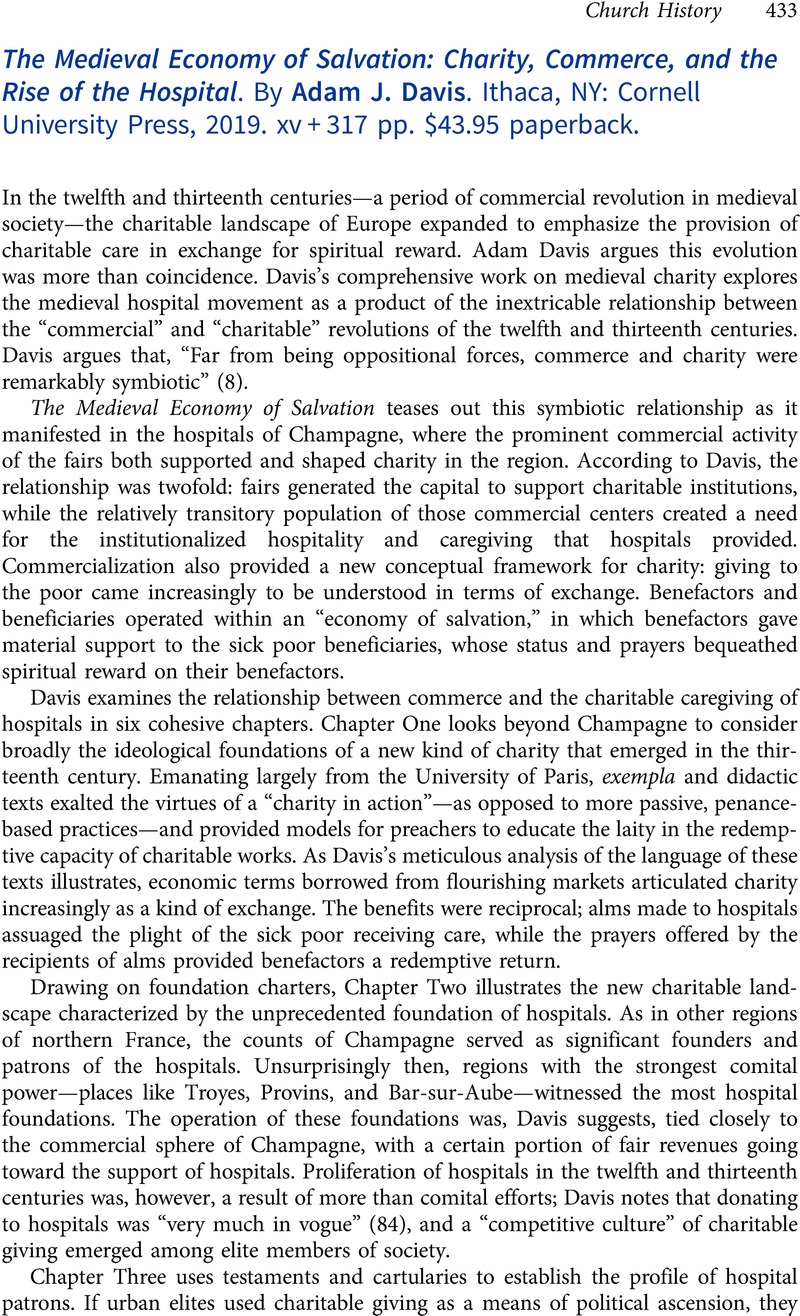No CrossRef data available.
Article contents
The Medieval Economy of Salvation: Charity, Commerce, and the Rise of the Hospital. By Adam J. Davis. Ithaca, NY: Cornell University Press, 2019. xv + 317 pp. $43.95 paperback.
Review products
The Medieval Economy of Salvation: Charity, Commerce, and the Rise of the Hospital. By Adam J. Davis. Ithaca, NY: Cornell University Press, 2019. xv + 317 pp. $43.95 paperback.
Published online by Cambridge University Press: 02 October 2023
Abstract
An abstract is not available for this content so a preview has been provided. Please use the Get access link above for information on how to access this content.

- Type
- Book Reviews and Notes
- Information
- Copyright
- Copyright © The Author(s), 2023. Published by Cambridge University Press on behalf of American Society of Church History


